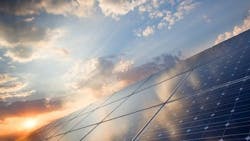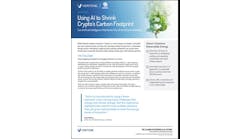In the Race to 100% Renewable Energy, Islands Will Win — With the Right Grid Improvements
Looked at individually, islands are often overlooked as unimportant players on the global economic stage. Smaller geographies, smaller communities, fewer resources, and often isolated locations mean less clout.
However, almost 10% of the world’s population — more than 740 million people, equal to the population of Europe — live on islands. And the unique conditions found on islands often make them global trailblazers and innovators.
Such is the case in the pursuit of developing renewable energy, where Iceland is a pioneer in geothermal energy and Scotland’s Orkney Islands are home to one of the world’s first large-scale tidal energy projects.
Many islands are seeking to reduce their dependence on importing greenhouse gas-emitting fossil fuels to generate electricity and instead tap into often abundant solar, wind, geothermal, and ocean energy. Thanks to their smaller size and populations, islands are running a shorter race to meet 100% of their energy demand with renewable energy supply. This, in turn, has made islands not only renewable energy leaders but also real-world learning labs for the larger mainland economies seeking to follow in their footsteps.
The article “A review of 100% renewable energy scenarios on islands,” published in the scientific journal WIREs Energy and Environment, examined nearly 100 journal articles published since 2004 on the topic, unearthing key trends in how islands are pursuing 100% renewables and what hurdles they’re encountering along the way.
Solar, Wind, and the Intermittency Stumbling Block
The 97 articles examined in the study covered the pursuit of 100% renewable energy on islands located across the world. From the Mediterranean to the South Pacific, solar PV and wind were the renewable technologies most often deployed, mirroring the global trend but with some minor differences. For example, islands on average installed smaller wind turbines to meet their demand and limited land availability led to higher use of rooftops for solar PV systems.
Many of the articles the researchers included in the study addressed the challenges the islands faced with renewable energy intermittency, particularly as the percentage of renewable energy began to grow past 30% of available capacity. One 2022 article detailed how weather conditions on Tenerife in the Canary Islands often led to periods of high dust pollution and low wind, sapping the output of solar and wind simultaneously and creating the need for energy storage capacity.
“Balancing this variability through more dispatchable [renewable energy] technologies or energy storage technologies is crucial for realizing 100% [renewable energy supply],” the researchers wrote. “100% [renewable energy supply] requires renewable-only strategies to maintain supply reliability.”
The 97 journal articles reviewed identified two different approaches to reliably balancing renewable supply and demand
- Use dispatchable power plants powered by biomass, biofuels or other renewable fuels
- Use energy storage
While there are merits to both strategies, and pursuing both might be the right strategy for many islands, it’s important to note that most islands have limited domestic biomass or biofuel supplies and the costs to import such fuels can be prohibitive. Many islands view energy storage as an attractive solution because it optimizes use of solar and wind resources they have already installed.
But managing challenges on the path to 100% renewable energy isn’t as simple as plugging in a battery energy storage system (BESS). Island electric grids need a powerful brain to manage the increasingly complex and distributed systems.
The Role of High-Speed Controllers in the Race to 100% Renewables
Sophisticated high-speed control technologies combined with advancements in inverter-based distributed energy resources (DERs) are emerging as a key innovation for islands to sustain electric reliability on a highly renewable, distributed electric grid. In their optimal use case, sophisticated control equates to a high-speed controller that provides island grid operators the tool they need to manage island-wide grids, ranging from a few megawatts of system capacity to thousands of megawatts.
High-speed controllers can respond quickly to address intermittency challenges, such as voltage and frequency regulation response. They can be used to rapidly and accurately dispatch commands to a mix of supply assets—from solar PV to wind to BESS—to manage frequency fluctuations autonomously, maintain BESS readiness, plan and execute 24-hour schedules based on weather and power production data, and provide real-time monitoring and response to balance energy supply and demand.
Operating electric grids on islands has always been a challenge, which is one reason why islands have become leading innovators advancing renewable energy. As they extend their lead on the race to 100% renewable energy, their next innovation will be redesigning the grid for the clean energy future with technologies like high-speed controls.
Read the new white paper, “How high-speed controllers are a reliability solution for island electric grids in transition,” from PXiSE to learn more about how islands can maximize the effectiveness of an island-wide controller.









